



1. Fat Harvesting
2. Fat Treatment
Harvested fat then undergoes a preliminary rough purification, before it is purified with Puregraft, a delicate but highly efficient double filtering, closed-system medical device that rids the adipose tissue of any contaminants in order to obtain highly purified fat.
3. Fat Grafting
We then perform uniform grafting of the purified adipose cells into the dartos fascia, or layer of tissue found in the shaft of the penis, through minuscule incisions at the base. Hair regrowth will ensure that these incisions will be invisible once healed.
All of our procedures are outpatient procedures, with the patient being discharged within a few hours from the surgery.
We have developed our world-renowned girth enhancement procedure based on almost twenty years of experience in the field of designer phalloplasty. Our specialist surgeon has utilised most of the techniques listed below and has developed an approach which produces optimal results for the patient.
For many years, the search to discover a less invasive and safer method to enlarge the penis has prompted research into the use of materials which could be inserted into the penis, producing an enlargement without endangering the function of the organ.
As a result, various solutions have been explored; the use of synthetic or heterologous materials (the latter meaning tissue taken from another organism, human or animal) or autologous (meaning taken from the individual).
Synthetic materials that have been tested are dermal fillers, both temporary and permanent. The use of permanent or non-resorbable fillers, such as polyacrylamide, Formacryl and Bioalcamide, has been abandoned due to problems with rejection and issues with the aesthetic results achieved. We also feel that temporary dermal fillers, such as hyaluronic acid, do not provide satisfactory results due to unavoidable and aesthetically-displeasing accumulations of filler.
Previously, heterologous materials (those that are foreign to the body but not synthetic) were used, particularly Intexen LP, a material that was taken from pigs. There were problems of compatibility and aesthetic results, including shortening of the penis during erection. In light of this issue, the US manufacturer of Intexen LP announced that as from April 2011 the product would be removed from the market. In our opinion, any materials of a prosthetic nature are not advisable, both because of possible complications and the unnaturalness of the result.
We only use autologous materials, made of the patient’s own adipose tissue, because they have the advantages of no risk of allergic reaction or rejection and also result in a much more natural visual and tactile effect. Furthermore, harvesting of autologous fat for enhancing the face and body is a widely used and established technique.
Compared to using animal or synthetic fillers, the use of autologous fat for volumetric enlargement of the penis (lipopenosculpture) presents a number of advantages, from the impossibility of rejection and incompatibility, to the absence of risk of infection, to the complete integration with the transfer area.
Potential disadvantages are the possibility of asymmetry, nodularity and particularly the partial resorption of the fat itself. The latter occurs because the transplanted adipose tissue requires a good blood supply and needs to form new vascular connections to survive. Reabsorption can vary from patient to patient and some of the enhancement may be lost after the initial procedure.
Harvested adipose tissue will also contain other materials alongside the pure fat cells and these can affect the form and consistency of the penis. However, in recent years, there has also been much research into how to make fat harvesting and transfer a more durable and effective procedure. The development of the Puregraft filtration technology has been a significant step forward in the fat grafting technique, greatly improving long-term graft retention.
Lipopenostructure
For the enlargement of the penis, lipopenostructure is a simple, quick, minimally invasive and the safest surgical procedure available. Let us see in detail what the method involves:
Lipopenosculpture with Puregraft Fat Purification
This procedure is performed in a sterile environment and consists of two phases: first the harvesting of adipose tissue using lipoaspiration and, then, the purification process of the fat through centrifugation.
The fat is typically harvested under local anaesthetic using the tumescent liposuction technique (or other anaesthetic if combined with other procedures) and a given quantity of fat (previously agreed upon by the surgeon and the patient) is taken from the sides or the abdominal region.
Minute incisions are made in the harvest area, through which small cannulas are inserted to gently suction out the fat, leaving no visible scarring once healed. This adipose tissue then undergoes a washing and centrifugation process, known as Puregraft, to remove any contaminates, leaving us with the purified fat cells. This fat is then transferred to the penis.
A small quantity of the fat, variable from person to person but usually about 20 to 30% of the transplanted tissue, will reabsorb over the following months. Taking this into account and to ensure optimal results for the patient, we implant a slightly higher quality of fat than is necessary.
Once any reabsorption occurs, the final results are considered permanent and should not require future ‘touch-ups’. The results are usually considered highly satisfactory, but the procedure is so safe and straightforward that it can be repeated if required.
The Lipopenostructure procedure
The combined lipopenostructure operation (for penis enlargement) is a simple and quick (and decidedly less invasive) surgical method which is made up of three distinct phases:
1. First, we harvest adipose tissue from the supra-pubic region or, alternatively, from the abdomen and/or the sides using thin cannulas. This procedure, besides obtaining the necessary fat, enables the reduction of the supra-pubic adipose panniculus (a frequent fat accumulation zone in men), which has the added bonus of making the penis look visibly larger.
2. Then, we purify the fat using the Puregraft Technique. Click here to read more...
3. Finally, we implant the fat in the space between the overlying skin and the uniform implantation of the fat obtained into the space between the skin and the corpus cavernosum, or erectile tissue, in the penis, through two small incisions at the base of the penis.
Both the harvesting and implantation of the fat are made through miniscule incisions (about 2mm) which will not be visible once healed and, furthermore, make its possible to perform the procedure under local anaesthetic. The quantity of fat to be implanted depends on the patient’s individual anatomy, their results they desire and the quantity of fat that is available for implantation.
With this combined method, the results are very often extremely satisfactory and, in almost all cases, it will not be necessary to perform further fat implantation in the future, even though it is technically possible and very straightforward if required.
In most cases the increase in circumference obtained (measured in a flaccid state) is of about 30%.
This procedure can be performed under local anaesthetic (with or without sedation), following the concept of ‘painless surgery’. Since there are no surgical incisions, discharge is done within a few hours of the operation and all activities including sports can be resumed immediately, with the exception of sexual activity, which can be resumed no less than 30 days after the operation to avoid an uneven engraftment of the fat.
In the initial stage of the procedure, we harvest adipose tissue from an area of the body with excess fat, such as the supra-pubic area or from the abdomen and/or hips/thighs, using a very thin, blunt-tip cannula.






